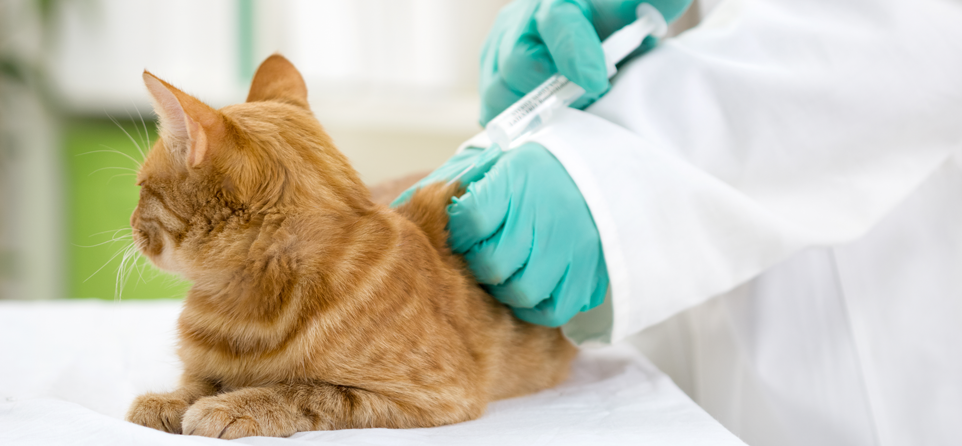According to the Banfield State of Health Report 2016, canine diabetes has increased by 79.7% since 2006, while in felines the prevalence of diabetes has increased 18.1% over the same time frame. Yikes! Those numbers are alarming. When you think about diabetes, the first thing that comes to mind is likely high blood sugar. It’s a disease that can lead to serious health complications including heart disease, stroke, kidney damage, circulatory issues, nerve damage and blindness. It’s a fact that diabetes is directly connected to high carbohydrate diets and obesity (1) (2) (3). In this article we’ll look at how we can prevent and manage this disease in our pets.
What is Diabetes?
Diabetes is a lack of or decrease in the body’s ability to produce insulin, a hormone that regulates blood glucose (sugar) which is used as energy in the body. Dogs and cats tend to develop different forms of diabetes. Dogs most commonly develop a form that resembles Type 1 (Insulin-Dependent) diabetes in humans and occurs when the pancreas stops producing adequate levels of insulin. Insulin is a hormone responsible for regulating blood sugar levels. Inadequate levels of insulin result in hyper (high) glycemia (blood sugar). Cats tend to develop a form resembling Type 2 diabetes where the body either develops resistance to insulin and or does not make enough to properly stabilize the blood sugar.
How Does Diabetes Develop In Pets?
Diabetes does not just appear overnight. It develops over a long period of time. There are medical, genetic and environmental components to the development of diabetes in pets.
Another important (and rather underrated) culprit is diets that are high in processed foods, poor diet, particularly refined sugar and low-quality, high starch (high glycemic) animal feed.
Autoimmune disease is considered a prevalent factor in development of Type 1 diabetes. Basically, the body's own immune system — which normally fights harmful bacteria and viruses — mistakenly destroys the insulin-producing cells in the pancreas. Recent research has established a clear link between autoimmune disease and leaky gut (4), which points right back to diet.
Obesity substantially increases the risk for the development of Type 2 diabetes (5). Obesity is a often a result of sedentary lifestyle and poor diet so managing these two factors are key for preventing diabetes.
How Can I Prevent My Pet From Developing Diabetes?
Sometimes genetics aren’t on your pet’s side but they typically take a back seat to lifestyle and diet. Environmental factors also play a role in the development of genetic disease and this includes diet, air quality, water quality and lifestyle (eg. exercise, stress. etc.) and each one of us, animal or human, has our own unique predisposition to these factors. While we can’t fully control our pets environment, we can give them some great tools to manage these factors with a high quality diet.
There is a lot of research that has gone into studying the best diets for pets once they have developed diabetes and, strangely, NO research about what types of animal diets may prevent diabetes in the first place. We know from human studies that diets rich in processed carbohydrates result in blood glucose spikes and, therefore, a higher risk of developing diabetes. On the other hand, human studies show that diets including whole foods, unsaturated fatty acids, unrefined grains, good quality proteins and a wide variety of vegetables, decrease in body fat and regular aerobic exercise can prevent and resolve type 2 diabetes and help to greatly improve blood sugar stability in type 1 diabetics (6). So why wouldn’t this work for prevention? You can avoid ever having to worry about this problem! Keep reading!
Managing Diabetes in Your Pet - Naturally
If your pet is already diagnosed with diabetes, they can still have a healthy and long life as long as their blood sugar levels are carefully managed. This is a very simple with a raw food diet.
On the other hand, if left unchecked, high blood sugar can cause a number of serious health complications and problems including blindness, circulatory disease, kidney damage, heart disease circulatory issues, coma, seizures and even early death.
What Causes High Blood Sugar In Pets?
It’s a combination of things but essentially, blood sugar is raised by what your pet eats. If they eat highly processed carbs such as flour, grain meals or other starchy food products found in extruded pet food, the GI tract digests these foods and the end product is sugar. Sugar will then begin to enter the bloodstream through the digestive lining. Without adequate levels of insulin, this influx of easily accessible sugar causes blood sugar to spike every time your pet eats and puts great stress on the endocrine system and other systems in the body. Depending on your pet’s genetic predisposition, the body may be able to compensate on a diet high in processed carbs for some time… but for how long?
Exercise is another key factor in blood sugar regulation. It causes excess (sugar) in the body to be converted into sugar and burned rather than be stored in the cells. If your pet doesn’t get enough exercise, there is higher risk for unstable blood sugar levels.
What Foods Keep Blood Sugars Stable?
Here are the top 6 ways to help regulate your pet’s blood sugar and manage diabetes in your pet. These dietary tips are also recommended for the prevention of diabetes so every pet can benefit! We highly recommend that you work with an integrative veterinarian to develop the best diet plan for your pet.
Top 6 Ways to Regulate Blood Sugar in Your Pet
Protein
High quality proteins, mainly meat sources, are important for regulating your pet’s blood sugar. A diet based on protein instead of carbohydrates will keep blood sugars consistent. Including daily fresh meat, fish and organs is the most appropriate protein source for dogs and cats and should be given in its most natural state (raw) whenever possible.
Fat
Fat is another blood glucose regulator. It is best fed from whole food sources such as meat and fish. Balancing your saturated fats and your omega 3’s and 6’s will help to stabilize blood glucose significantly. Always check with your veterinarian first since approximately 40% of dogs that suffer from diabetes have a history of chronic pancreatitis and cannot handle fats in the same capacity as healthy dogs (7). It may be a process of healing the digestive system and the pancreas first before increasing the fat content of the diet. Make this decision with your veterinarian.
Fibre
Unprocessed fibre sources that contain a high mineral content are great blood glucose regulators. That’s why it’s a great idea to add lots of freshly juiced green vegetables, including the pulp which is the main fibre source. Not only will this provide minerals important for blood sugar regulation but the fibre also helps to slow the uptake of sugar from the digestive tract and has the added benefit of providing roughage and prebiotics for healthy gut flora. Fibrous veggies are also a great option for pets who need to be careful about how much fat they consume. They promote weight loss in obese pets and are a safe, low-fat food source for animals with a history of pancreatitis. Olie Naturals Coconut Crumble is another great source of fibre and fats that are safe for animals suffering from pancreatic disease
Probiotics
In humans, it has been discovered that our gut flora can play a part in the development and management of diabetes. (8) It’s important that your pet receives probiotic supplementation if they are suffering from diabetes. Diet can also drastically change the make-up of your pet’s microbiome (9) which can affect blood sugar regulation. To learn more about choosing a probiotic for your pet, click here.
Natural-Source Vitamins and Minerals
by feeding a varied fresh food diet with meats, fish and vegetables, you’ll be providing vitamins and minerals that are essential for diabetic animals including chromium, biotin, vanadium, magnesium plus vitamins E, C and B complex. It may even be appropriate to add whole food supplements that contain these nutrients to help control blood glucose. Your veterinarian can help you determine this through blood testing and regular exams.
To read more about these nutrients and their function in diabetes management, check out this article on The Role of Vitamin and Mineral Supplements in Diabetic Management from the American Diabetes Association.
Exercise
Exercise is an important part of daily life for all of us and it also helps to balance blood glucose. Be sure that your pet is getting enough exercise. If your pet is obese and out of shape (common with diabetic pets and a precursor for the development of diabetes), you may need to start with smaller walks several times per day. Later, as your pet’s weight stabilizes and they gain more muscle, they will be able to enjoy longer more vigorous exercise sessions.
What to Avoid for Diabetic Pets- and All Pets, In Fact!
Highly processed carbohydrates
You may not be outwardly feeding your pet refined sugars but this is as close as it gets. Highly refined, starchy carbohydrates of any kind will be processed into sugar in the body and will cause a spike in blood glucose. This can be highly dangerous for a diabetic and can pave the way to the development of diabetes in animals that are fed this way on a daily basis. A diet based on high quality proteins, fats and fibre will be your best option for prevention and management.
Ingredients That Contain Starch
Includes; corn meal, whole wheat flour, oat flour, oat flakes, rice flour, brown rice, cracked pearled barley, corn gluten meal, whole grain corn, whole grain wheat, whole grain sorghum, soybean meal, green peas, yellow peas, pea meal, chickpea meal.
Refined Sugar
Sugar can be the listed ingredient but it can also be disguised in the ingredient list as any of the following. Sugar is extremely dangerous for diabetic animals and will spike blood sugar, even in healthy pets.
The following ingredients are more often found in junky pet treats and pet foods: Fructooligosaccharides, high-fructose corn syrup, agave nectar, barley malt syrup, beet sugar, brown rice syrup, cane crystals, cane sugar, corn sweetener, coconut sugar, dextrin, dextrose, honey, lactose, maltodextrin, malt syrup, maltose, maple syrup, molasses (if unfermented), palm sugar, rice syrup, saccharose, sorghum, sorghum syrup, sucrose, treacle, xylose.
Sedentary Lifestyle
Get your pet moving! Regulating weight and blood sugar cannot be done by lying around. Get out and enjoy the world with your pet. This goes for all pets and people!
IMPORTANT- Monitoring Blood Sugar Levels
When you are switching your pet’s diet, it is extremely important that you closely monitor your pet’s blood sugar so that you do not give too much or too little insulin as your pet adjusts to their new diet. Most likely your pet’s blood sugar will become more stable on a meat-based diet. You must adjust the insulin dosage as the blood sugars stabilize. Cats may not need insulin at all once they have switched onto a raw diet. If you’re not sure, it is highly recommended that you switch your pet to their new diet with the help of your veterinarian so that blood sugar levels and insulin dosages are carefully considered.
To get the best diet recommendations for your pet, fill out our online feed guide form and request a detailed diet plan for your pet.
References:
Canine and Feline Diabetes Mellitus: Nature or Nurture? : https://academic.oup.com/jn/article/134/8/2072S/4688883
A diet lower in digestible carbohydrate results in lower postprandial glucose concentrations compared with a traditional canine diabetes diet and an adult maintenance diet in healthy dogs: https://www.sciencedirect.com/science/article/abs/pii/S0034528811003390
The Growing Problem of Obesity in Dogs and Cats: https://academic.oup.com/jn/article/136/7/1940S/4664725
Fasano, A. Leaky Gut and Autoimmune Diseases. Clinic Rev Allerg Immunol (2012) 42: 71. https://doi.org/10.1007/s12016-011-8291-x
Mechanism linking diabetes to obesity: https://www.ncbi.nlm.nih.gov/pmc/articles/PMC4259868/
Simple Steps to Preventing Diabetes from Harvard University Nutrition Source: https://www.hsph.harvard.edu/nutritionsource/disease-prevention/diabetes-prevention/preventing-diabetes-full-story/
Management of Canine Diabetes: https://www.sciencedirect.com/science/article/pii/S0195561601500030
Impact of gut microbiota on diabetes mellitus: https://www.sciencedirect.com/science/article/pii/S1262363616303962
Influence of diet on the gut microbiome and implications for human health: https://www.ncbi.nlm.nih.gov/pmc/articles/PMC5385025/






Comments